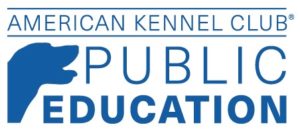
Learning Objectives
Students will annotate the text and answer questions about the text, citing the text as evidence.
Grade Levels
Grades 5-6
Common Core Standards
CCSS.ELA-LITERACY.RI.6.1
Cite textual evidence to support analysis of what the text says explicitly as well as inferences drawn from the text.
CCSS.ELA-LITERACY.RI.6.2
Determine a central idea of a text and how it is conveyed through particular details; provide a summary of the text distinct from personal opinions or judgments.
CCSS.ELA-LITERACY.RI.6.3
Analyze in detail how a key individual, event, or idea is introduced, illustrated, and elaborated in a text (e.g., through examples or anecdotes).
CCSS.ELA-LITERACY.RI.5.1
Quote accurately from a text when explaining what the text says explicitly and when drawing inferences from the text.
CCSS.ELA-LITERACY.RI.5.2
Determine two or more main ideas of a text and explain how they are supported by key details; summarize the text.
Materials Needed
Student copies of Becoming Raven: A Very Special Rescue Journey or web-enabled devices for reading a digital copy.
Lesson
Introduction
- Ask students to briefly glance through the article and make observations about the text features, such as photos, captions, title and subheading.
- What do students expect to learn about by reading this article?
Explicit Instruction/Teacher Modeling
- Model how to annotate the text, using the first paragraph.
- If students each have a paper copy, you can model writing and drawing on the text. If students are using a digital copy, model using a journal or notebook paper for the annotation. For the purposes of this lesson, we will assume each student has a printed copy of the article.
- Draw a stick figure in the margin near paragraph 1 to represent yourself and write a personal connection you have to the story. This could be a thought bubble saying any connection that comes to mind, like: “I wonder what happened to that dog.” “I have a big dog too.” “I thought that was a husky.” Connecting with the text helps increase comprehension and gives students a purpose for reading.
- Underline or circle any unfamiliar words. Possible vocabulary could be exhibitor and rehabilitate in the first paragraph. Discuss with students how to find out
what the words mean. Some teachers encourage the use of dictionary; others prefer that students try using context clues and ask each other or the teacher for a definition before going to the dictionary.
- Make a note of questions you have. In the first paragraph you might note, “I wonder how you rehabilitate a Malamute.” Or “What does she mean by ‘blank slate’?” Or “How do you find dogs that need rescuing?”
- Look for author’s purpose or message. You may want students to highlight or put a box around passages that indicate the author’s message or purpose. In the first paragraph, point out that the author is trying to show us that she has a great deal of personal experience with Alaskan Malamutes, rescuing them, and understanding what they need.
Independent Work/Group Work
- Students annotate the text following your model and work together to answer the questions from the Becoming Raven question sheet.
Review and Closing
- Discuss answers to the questions on the sheet and remind students to cite the text when telling why they gave the answer they chose.
Extension
- Draw a line on the board and label one end “Agree” and the other end “Disagree.” Ask students to write their name on a sticky note or on the board and place it where their opinion lies on the continuum. Some items to debate include:
-Is it ok to change a dog’s name when you adopt them?
-Ms. Silvestri and Ms. Hamilton did a good job rehabilitating Raven.
Resources
Hamilton, Phyllis I. (July 2019.) Breed Columns, Working Group, Alaskan Malamutes
“Becoming Raven: A Very Special Rescue Journey” AKC Gazette pages 50-52. Retrieved from
http://viewer.zmags.com/publication/fd2cdc2e?utm_source=Sailthru&utm_medium=ema il&utm_campaign=20190715_Gazette_July&utm_term=Gazette%20Send%20List#/fd2cdc2e/51
Alaskan Malamute (n.d.) Retrieved from https://www.akc.org/dog-breeds/alaskan-malamute/


